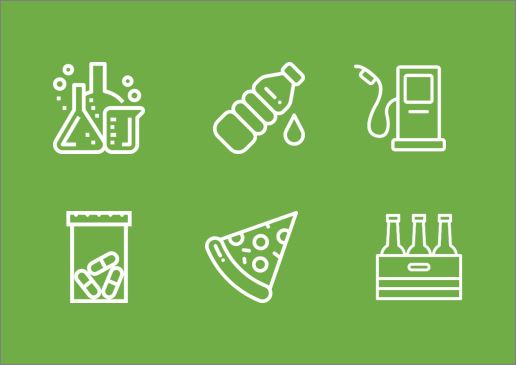Process manufacturing
Process manufacturing in Supply Chain Management provides integrated functionality for planning, managing, and distributing in process manufacturing.
The following are characteristics of process manufacturing:
Uses a formula, or recipe
Blends products together in a batch
Builds something that cannot be taken apart
Has analogous products, where you can’t tell one product from another
Includes products that cannot be reversed
Involves variable ingredients
Produces co-products and by-products
Contains minimal interruptions
Makes products in bulk quantities, such as paints, pharmaceuticals, beverages, and food products
Measures raw material ingredients in formulas by weight or volume instead of pieces
Has one or more standard sizes (batch sizes) that are scaled for a quantity greater than one
Has potentially one or more product outputs
Accounts for waste/loss as yield, which is the ratio between output and input
Supports a wide range of processes, including make to order (MTO), make to stock (MTS), in mixed mode, and hybrid environments

Some of the key requirements of process manufacturing include:
- Formula management
- Co-product and by-product planning and management, including allocating cost for unplanned co-products and by-products
- Containerized packaging
- Batch order management, including consolidating batch orders for packed products with similar packed products and a parent bulk item
- Full visibility and partial visibility catch weight functionality
- Batch attribute assignment, search, and reserve capability
- Inventory batch management
- First expiry, first out (FEFO) and shelf life inventory management to set vendor-specific batch information
- Commodity pricing functionality
- Rebate and trade promotion capability
Process manufacturing can be used by companies who want to automate their distribution processes for products that are usually manufactured in a batch or semi-continuous processing environment.
Features of process manufacturing for these groups of companies include the following:
- Distributors of processed goods can forecast and plan the supply and demand.
- Procurement and sales can be managed in a dual unit of measurement.
- Short and long shelf life and stringent quality standards can be maintained for inventory batches of natural and consumer packaged products, such as pasteurized milk, paint production and mixing, and so on.
- Process manufacturing can also be used by companies that want to automate their batch or semi-continuous manufacturing processes. Manufacturers of processed goods can quickly define complex formulas to accurately control production costs and they can more easily switch between make or buy decisions with agility.
Features of process manufacturing for these groups of companies include the following:
- Retention of complex formulas
- Manage shelf life products
- Manage commodity pricing
- Manage product compliance
- Set up and apply complex rebates
- Advanced lot tracking and control
- Enhanced cost management of multiple outputs
- Procure, store, and sell products in dual units of measure
- Manage production for assembly or disassembly for single or dual units of measure